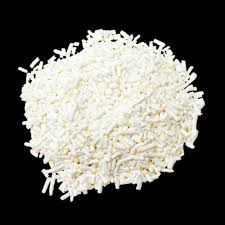
Exploring the Diverse Applications and Innovative Products of Formic Acid in Various Industries
Formic Acid Products An Overview
Formic acid, also known as methanoic acid, is one of the simplest carboxylic acids with the chemical formula HCOOH. It is a colorless, odorless liquid that is highly soluble in water. Formic acid is naturally found in the venom of ant species, from which it derives its name. Over the years, its applications have expanded significantly, leading to a diverse range of products that utilize formic acid's unique chemical properties.
Industrial Applications
One of the primary areas where formic acid is used is in the textile industry. It serves as a dyeing and finishing agent, giving textiles a range of desired properties, such as improved color fastness and resistance to wrinkles. The acid is also instrumental in the leather tanning process, enhancing the quality and durability of leather products.
In agriculture, formic acid is prized for its use as a preservative in animal feed. When added to silage, it helps in preventing spoilage and encourages the growth of beneficial bacteria, improving the fermentation process. This makes feeds more palatable and nutritious for livestock while reducing waste.
Moreover, formic acid has significant applications in the chemical industry. It acts as a precursor in the synthesis of various chemicals, such as methanol, acetic acid, and formaldehyde. Its role as a reducing agent in chemical reactions makes it valuable in manufacturing processes, especially in producing high-purity metals.
Pharmaceutical and Cosmetic Uses
formic acid products

Another important area of formic acid application is in the pharmaceutical and cosmetic sectors. Formic acid is used in the synthesis of various pharmaceutical compounds. Its antiseptic properties enable its usage in some medicinal formulations, where it helps in treating infections and skin disorders.
In cosmetics, formic acid is often used in skin care products, primarily as a pH adjuster and exfoliant. It can effectively promote skin renewal by removing dead skin cells, thus enhancing the overall texture and appearance of the skin. Additionally, it provides antibacterial benefits, making it an ideal ingredient for products aimed at acne-prone skin.
Environmental Considerations
While formic acid has numerous industrial applications, it is also being explored for its potential in environmental sustainability. Researchers are investigating its application in carbon capture technologies. By utilizing formic acid in reactions that convert CO2 into formate, an intermediate that can be easily stored or further processed, it may offer a pathway for managing greenhouse gas emissions.
Additionally, the use of formic acid in renewable energy technologies is growing. It is being explored as a hydrogen carrier, which would enable safer storage and transport of hydrogen fuel, ultimately supporting cleaner energy solutions.
Conclusion
Formic acid is a versatile compound with a wide range of products across various industries, from textiles to agriculture and pharmaceuticals. Its unique properties not only enhance product quality but also provide essential functionalities in diverse applications. As industries continue to seek sustainable and innovative solutions, the importance of formic acid is expected to grow, underlining its role as a key chemical in modern manufacturing and environmental efforts. Whether in preserving livestock feed or discovering new pathways for carbon utilization, formic acid stands at the forefront of promising advancements in both industry and sustainability.
-
Industrial Chemicals: Quality & Purity for Every IndustryNewsAug.28,2025
-
Nitrile Rubber Honoring Strict Production StandardsNewsAug.22,2025
-
Aspartame Ingredients Honoring Food Safety ValuesNewsAug.22,2025
-
Fertilizer for Balanced Plant NutritionNewsAug.22,2025
-
Cyanide Gold Processing with High Purity AdditivesNewsAug.22,2025
-
Formic Acid in Textile Dyeing ApplicationsNewsAug.22,2025
-
Aluminum Hydroxide Gel in Skincare ProductsNewsAug.22,2025
Hebei Tenger Chemical Technology Co., Ltd. focuses on the chemical industry and is committed to the export service of chemical raw materials.
-

view more DiethanolisopropanolamineIn the ever-growing field of chemical solutions, diethanolisopropanolamine (DEIPA) stands out as a versatile and important compound. Due to its unique chemical structure and properties, DEIPA is of interest to various industries including construction, personal care, and agriculture. -

view more TriisopropanolamineTriisopropanolamine (TIPA) alkanol amine substance, is a kind of alcohol amine compound with amino and alcohol hydroxyl, and because of its molecules contains both amino and hydroxyl. -

view more Tetramethyl Thiuram DisulfideTetramethyl thiuram disulfide, also known as TMTD, is a white to light-yellow powder with a distinct sulfur-like odor. It is soluble in organic solvents such as benzene, acetone, and ethyl acetate, making it highly versatile for use in different formulations. TMTD is known for its excellent vulcanization acceleration properties, which makes it a key ingredient in the production of rubber products. Additionally, it acts as an effective fungicide and bactericide, making it valuable in agricultural applications. Its high purity and stability ensure consistent performance, making it a preferred choice for manufacturers across various industries.





